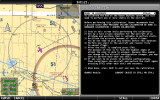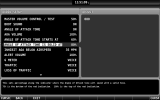What is a "full" calibration?
I spoke to David at Dynon Tech support this week and he told me these 2 rules for calibrating the AoA system:
1) Every time you perform and SAVE a stall calibration, it over writes and replaces what was in Skyview's memory. Performing more and more stalls and saving the data after each one is not an additive process. The last one performed is all Skyview retains in memory.
2) If you perform a series of stalls prior to pressing the SAVE button (such as no flaps, partial and full flaps), all Skyview stores in memory is the highest angle of attack sensed during all those combined stalls. Again, it is not an additive process. In my example, since the highest angle of attack would be experienced with full flaps, only that stall/AoA would be written into Skyview.
The installation guide, pilot user's guide and on-screen instructions (see attached) don't really make the above 2 rules very clear.
Which is why I asked in my 1st post, how do pilots calibrate their AoA system - no, partial or full flaps and why?
Andre'




